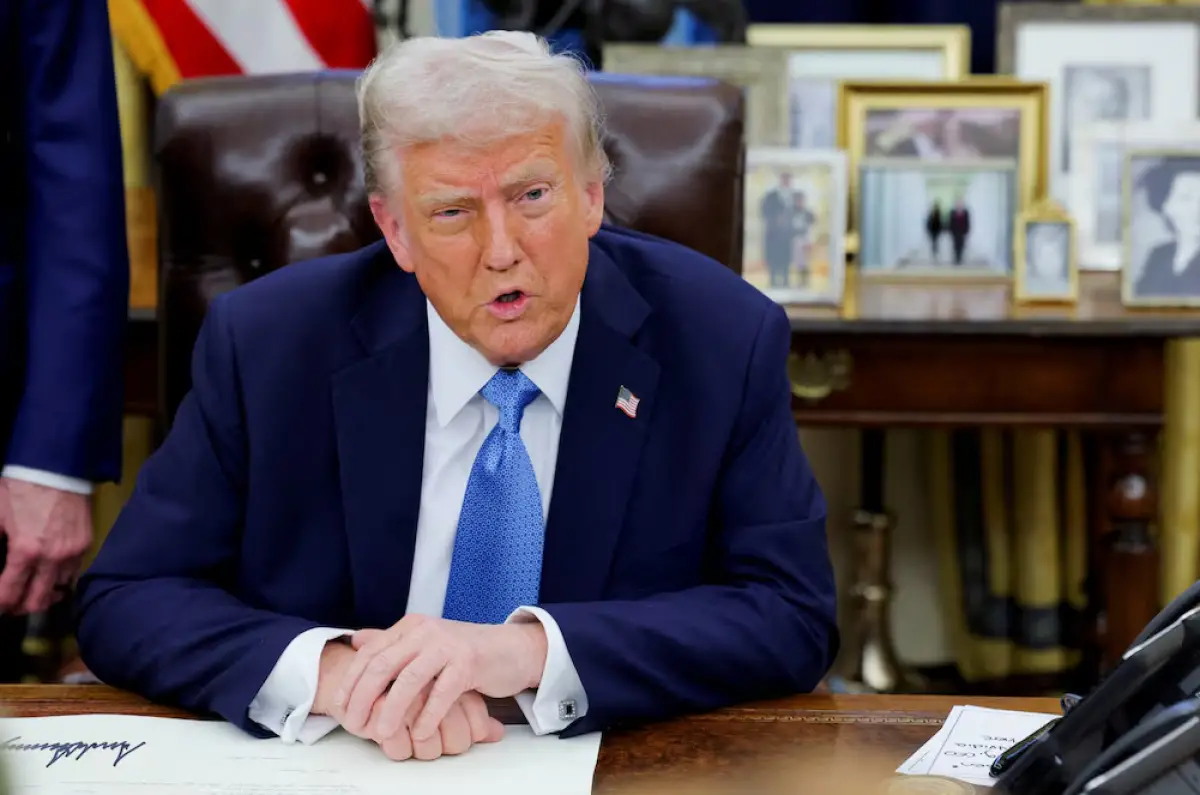A significant federal operation has just led to the arrest of eight individuals involved in one of the largest smuggling schemes targeting the United States. The operation, which used the bustling Ports of Los Angeles and Long Beach as key entry points, allegedly brought in millions of dollars worth of illegal and counterfeit goods, causing serious concern among U.S. authorities. The bust has revealed a complex web of dishonest truck drivers, logistics companies, and warehouse owners, all playing roles in a sophisticated plot to bypass U.S. customs regulations.
With a lead orchestrator still at large and believed to be in China, this illegal network has sparked major discussions about the integrity of U.S. ports and the importance of securing borders to protect national interests. The shocking details of the operation and the high-stakes drama surrounding the arrests have left many questioning how such a massive scheme was able to run undetected for so long.
In this article, we will examine the full scope of the smuggling operation, how it was carried out, the arrests made, and the far-reaching consequences for U.S. businesses, consumers, and national security. Additionally, we’ll explore the implications of this case as the trial approaches, and how similar criminal organizations are being dismantled across the country.
The Scope of the Smuggling Operation: From China to U.S. Shores
The smuggling operation in question is believed to have involved the coordinated efforts of multiple individuals, ranging from logistics executives to corrupt truck drivers. At its core, the scheme relied on manipulating shipping containers that were flagged for customs inspections at the Ports of Los Angeles and Long Beach—the busiest container ports in the Western Hemisphere.
Federal authorities uncovered that between August 2023 and June 2024, a series of counterfeit goods and dangerous chemicals were loaded into containers in China. Once the containers arrived at U.S. shores, the goods were to be diverted to offsite warehouses to avoid detection. The conspirators had access to distinct serial numbers for the security seals on shipping containers and used this knowledge to create duplicate fake seals. These counterfeit seals allowed the criminals to bypass customs inspections and continue their illegal activities without raising suspicion.
According to acting U.S. Attorney Joseph T. McNally, the total value of the goods smuggled through this operation is estimated at $200 million. The products involved were not just counterfeit consumer goods but also illegal chemicals, posing significant risks to public safety.
This operation was intricate and far-reaching. The conspirators used their knowledge of shipping logistics, including the manipulation of container inspections, to ensure that the contraband made it to its final destination. Once the containers arrived at the ports, the truck drivers involved in the scheme would transport them to offsite warehouses, where the goods were unloaded and replaced with counterfeit seals. These altered containers were then rerouted back to customs, making their way through the inspection process without raising any alarms.
The Key Players: Truck Drivers, Warehouse Owners, and Logistics Firms
The complexity of the scheme involved various criminal elements working together to move goods illegally across the globe. At the heart of the operation were dishonest truck drivers, warehouse owners, and executives from logistics firms. These individuals had access to sensitive information regarding shipping containers and were able to exploit their positions to facilitate the movement of contraband.
The logistics firms involved allegedly coordinated with their Chinese partners to manipulate shipping schedules and ensure that the smuggled goods would be included in legitimate shipments. Warehouse owners played a crucial role by accepting the goods once they had been removed from the containers, further enabling the operation to thrive undetected.
The truck drivers, often paid above the usual rate for their work, transported the containers to hidden locations before they were cleared through Customs and Border Protection (CBP). These drivers were a crucial part of the network, as they were responsible for physically moving the contraband from the ports to the next stage of the operation.
The Arrests: A Coordinated Effort to Shut Down the Operation
The federal investigation into the smuggling operation led to the arrest of eight individuals, with one additional defendant still at large. On Friday, seven individuals were taken into custody, and on Saturday, the eighth defendant was apprehended. The defendants face a range of charges, including conspiracy, smuggling, and violations of customs laws. If convicted, the individuals involved could face lengthy prison sentences, with penalties ranging from five to 20 years depending on the severity of the offense.
The indictment, which includes 15 counts, paints a picture of a highly organized operation that was able to circumvent U.S. customs inspections for nearly a year. Federal authorities were able to seize over $130 million worth of counterfeit and dangerous goods in connection with the smuggling operation, further highlighting the magnitude of the scheme.
In addition to the arrest of the defendants, law enforcement officials have also been working with international partners to track down the lead orchestrator of the operation, who is believed to be in China. The authorities are continuing their efforts to dismantle this criminal network and prevent similar operations from taking place in the future.
The Legal Consequences: What’s at Stake for the Defendants?
The legal stakes for the individuals involved in this smuggling operation are high. The charges they face carry severe consequences. The conspiracy charge could result in up to five years in prison, while violations of customs seals could lead to a decade behind bars. The most serious charge—smuggling—could result in up to 20 years in prison for each count.
The scale of the operation, combined with the amount of money involved, makes this one of the largest smuggling busts in recent years. Prosecutors are taking the case very seriously, with Assistant U.S. Attorneys Colin S. Scott and Amanda B. Elbogen leading the charge. The trial date is set for March 18, and more developments are expected to unfold as the investigation continues.
The Organized Crime Drug Enforcement Task Force (OCDETF) is actively working to dismantle high-level criminal organizations like the one involved in this smuggling operation. As part of their ongoing efforts, authorities are investigating similar operations and expect to make additional arrests in the coming months.
The Impact on U.S. Businesses and Consumers
The fallout from this smuggling operation is significant, as it affects not only the individuals and businesses involved in the illicit trade but also legitimate U.S. businesses and consumers. Counterfeit goods, especially those coming from overseas, pose a serious risk to American companies, which lose revenue when consumers unknowingly purchase substandard or illegal products. These goods can also be dangerous to the public, as some of the chemicals involved in the operation were classified as hazardous.
Furthermore, the manipulation of U.S. customs procedures undermines the integrity of the entire import-export system, making it harder for legitimate businesses to compete in the global marketplace. The smuggling operation has put U.S. national security at risk by facilitating the entry of dangerous goods into the country, and the authorities are committed to ensuring that such operations are shut down.
The National Security Implications: Securing U.S. Ports and Borders
The successful bust of this smuggling operation underscores the critical need to secure U.S. ports and borders. As the largest ports in the Western Hemisphere, the Ports of Los Angeles and Long Beach are key gateways for international trade. Ensuring the security of these entry points is essential not only for protecting U.S. businesses and consumers but also for safeguarding national security.
Special Agent in Charge Eddy Wang of Homeland Security Investigations (HSI) Los Angeles emphasized the complexity of smuggling operations like this one and the need to take swift action against those who engage in such illegal activities. “These operations have a significant impact on lawful trade practices,” Wang said, stressing the importance of vigilance in securing U.S. ports and stopping criminal enterprises from exploiting the system.
Conclusion: A Wake-Up Call for U.S. Customs and Border Protection
The massive smuggling bust at the Ports of Los Angeles and Long Beach serves as a stark reminder of the vulnerabilities in U.S. customs and logistics systems. With the arrest of eight individuals and the ongoing investigation into the lead orchestrator of the operation, the federal government is sending a strong message to those who engage in illegal trade.
The scale of the operation, combined with the serious national security and economic risks it poses, has prompted authorities to ramp up their efforts to dismantle criminal organizations and protect U.S. ports from future smuggling attempts. As the trial date approaches, more information about the operation and its far-reaching impact is expected to emerge, further highlighting the need for robust security measures at every stage of international trade.

